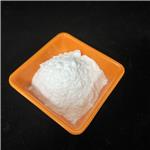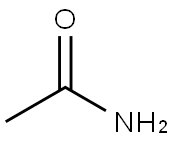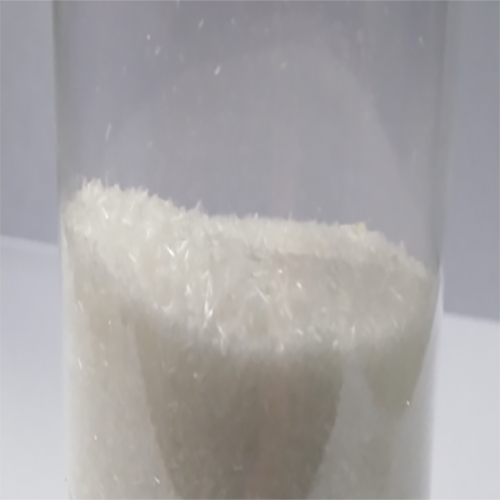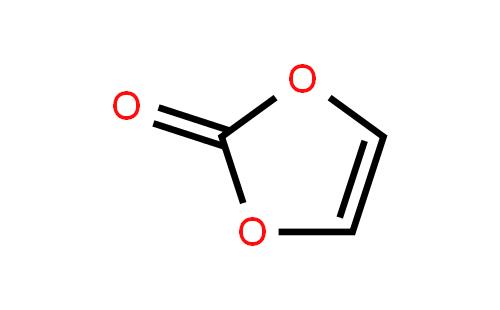Further exploration and application of acetamide in the treatment of fluorosis
Abstract
Fluorosis, as a common environmental poisoning phenomenon, poses a serious threat to human health. In recent years, the application of acetamide in the treatment of fluorosis has been widely concerned. This article aims to comprehensively review the in-depth exploration and application of acetamide in the treatment of fluorosis, including its therapeutic mechanism, clinical application, effect evaluation, and prospects, to provide new ideas and methods for the treatment of fluorosis.
Introduction
Fluorosis is a systemic disease caused by long-term ingestion of excessive fluoride, mainly manifested as dental fluorosis, bone fluorosis, etc. In severe cases, it can lead to multiple system damage such as the nervous system and digestive system. With the acceleration of industrialization and the intensification of environmental pollution, the incidence of fluorosis is on the rise, which poses a great threat to people's health and lives. Therefore, it is of great practical significance to find an effective treatment for fluorosis. As an organic compound, acetamide has shown remarkable effects in the treatment of fluorosis in recent years. This article will review the further exploration and application of acetamide in the treatment of fluorosis.

The basic properties and pharmacological effects
Acetamide (C2H5NO) is a white crystalline powder that is chemically stable and has good solubility and permeability. In the field of medicine, acetamide is mainly used as an analytical reagent, solvent, stabilizer, plasticizer, etc., but also widely used in organic synthesis, pharmaceutical industry, dye preparation, and other fields. In recent years, with the in-depth study of its pharmacological action, its application in the treatment of fluorosis has gradually attracted attention.1

The mechanism of action of acetamide in treating fluorosis mainly includes the following aspects:
Detoxification: The chemical structure of acetamide is similar to fluoroacetyl, which can compete for certain enzymes, such as amidase, so that fluoroacetyl cannot be produced, thereby eliminating the toxic effect of fluoroacetyl on the tricarboxylic acid cycle of the body. This detoxification mechanism makes it a specific antidote for fluoroacetamide insecticides.
Reducing blood ammonia levels: Patients with fluorosis often have elevated blood ammonia levels, and high blood ammonia levels are one of the important factors that lead to the aggravation of fluorosis symptoms. Acetamide can promote the excretion of ammonia and inhibit the synthesis of ammonia, thereby reducing the blood ammonia level in the body and alleviating the symptoms of fluorosis.
Protection of organ function: fluorosis can lead to multiple organ function damage, such as liver, kidney, nervous system, and so on. Acetamide can protect the function of organs and reduce the damage of fluoride poisoning to organs. The mechanism of action may be related to inhibiting the metabolic process of fluoride in organs and reducing the toxic effect of fluoride on organs.2
Clinical application of fluorosis treatment
(1) Emergency treatment of acute fluorosis
For patients with acute fluorosis, emergency treatment is the key. Acetamide injection is a specific antidote for acute fluorosis, which can quickly relieve the symptoms of fluorosis, reduce the level of blood ammonia, and protect the function of organs. In emergency treatment, the injection should be given as early as possible, and the dose and frequency of administration should be adjusted according to the patient's condition. At the same time, patients should be given adequate support and care, such as maintaining airway patency and maintaining water and electrolyte balance.3
(2) Long-term treatment of chronic fluorosis
Chronic fluorosis patients often present with dental fluorosis, bone fluorosis, and other symptoms, and need long-term treatment. Acetamide tablets are one of the main drugs for long-term treatment of chronic fluorosis. Patients need to take it for a long time to gradually improve the symptoms of fluorosis, reduce blood ammonia levels, and protect organ function. In the course of treatment, the patient's condition should be regularly monitored, and the drug dose and treatment plan should be adjusted.4
(3) Combined drug use to improve the therapeutic effect
In the treatment of fluorosis, drug combination has become a common treatment strategy. Acetamide can be combined with other drugs such as vitamin D, calcium gluconate, etc., to improve the treatment effect. Combined drug use can play a synergistic role of different drugs, enhance the therapeutic effect, and reduce the discomfort of patients. At the same time, the combination of drugs can also reduce the occurrence of drug side effects and resistance.5
Evaluation of the effect of treatment of fluorosis
To evaluate the efficacy of acetamide in the treatment of fluorosis, a series of clinical observations and laboratory tests are required. It mainly includes the following aspects:
(1) Improvement of clinical symptoms:
Observe the improvement of symptoms of fluorosis, such as nausea, vomiting, dizziness, fatigue, and headache.
(2) Changes in blood ammonia levels:
Monitor changes in blood ammonia levels in the patient to assess the effect of reducing blood ammonia levels.
(3) Improvement of organ function:
The improvement of organ function of patients is evaluated by relevant tests such as liver function and kidney function.
Adverse reactions and complications: patients were observed for adverse reactions and complications, such as allergic reactions and gastrointestinal reactions, during treatment.6
Through the observation and evaluation of the above indexes, we can fully understand the effect and safety of acetamide in the treatment of fluorosis, and provide a scientific basis for clinical drug use.
References
[1].Kennedy, G. L.; Short, R. D., Biological effects of acetamide, formamide, and their monomethyl and dimethyl derivatives. CRC critical reviews in toxicology 1986, 17(2), 129-182.
[2].Inkielewicz-St?pniak, I.; Knap, N., Effect of exposure to fluoride and acetaminophen on oxidative/nitrosative status of liver and kidney in male and female rats. Pharmacological reports 2012, 64(4), 902-911.
[3].Proudfoot, A. T.; Bradberry, S. M.; Vale, J. A., Sodium fluoroacetate poisoning. Toxicological reviews 2006, 25, 213-219.
[4].Bond, A., A study of gastric secretion and kidney function in chronic fluorosis in experimental animals. University of London, Bedford College (United Kingdom): 1959.
[5].Hanif, F.; Perveen, K.; Jawed, H.; Ahmed, A.; Malhi, S. M.; Jamall, S.; Simjee, S. U., N-(2-hydroxyphenyl) acetamide (NA-2) and Temozolomide synergistically induce apoptosis in human glioblastoma cell line U87. Cancer Cell International 2014, 14, 1-10.
[6].Zhang, M.-R.; Maeda, J.; Ito, T.; Okauchi, T.; Ogawa, M.; Noguchi, J.; Suhara, T.; Halldin, C.; Suzuki, K., Synthesis and evaluation of N-(5-fluoro-2-phenoxyphenyl)-N-(2-[18F] fluoromethoxy-d2-5-methoxybenzyl) acetamide: a deuterium-substituted radioligand for peripheral benzodiazepine receptor. Bioorganic & medicinal chemistry 2005, 13(5), 1811-1818.
Related articles And Qustion
See also
Lastest Price from Acetamide manufacturers

US $0.00/KG2025-04-21
- CAS:
- 60-35-5
- Min. Order:
- 1KG
- Purity:
- 98%min
- Supply Ability:
- 30tons/month

US $1.00/KG2025-04-21
- CAS:
- 60-35-5
- Min. Order:
- 1KG
- Purity:
- 99%
- Supply Ability:
- 10mt




